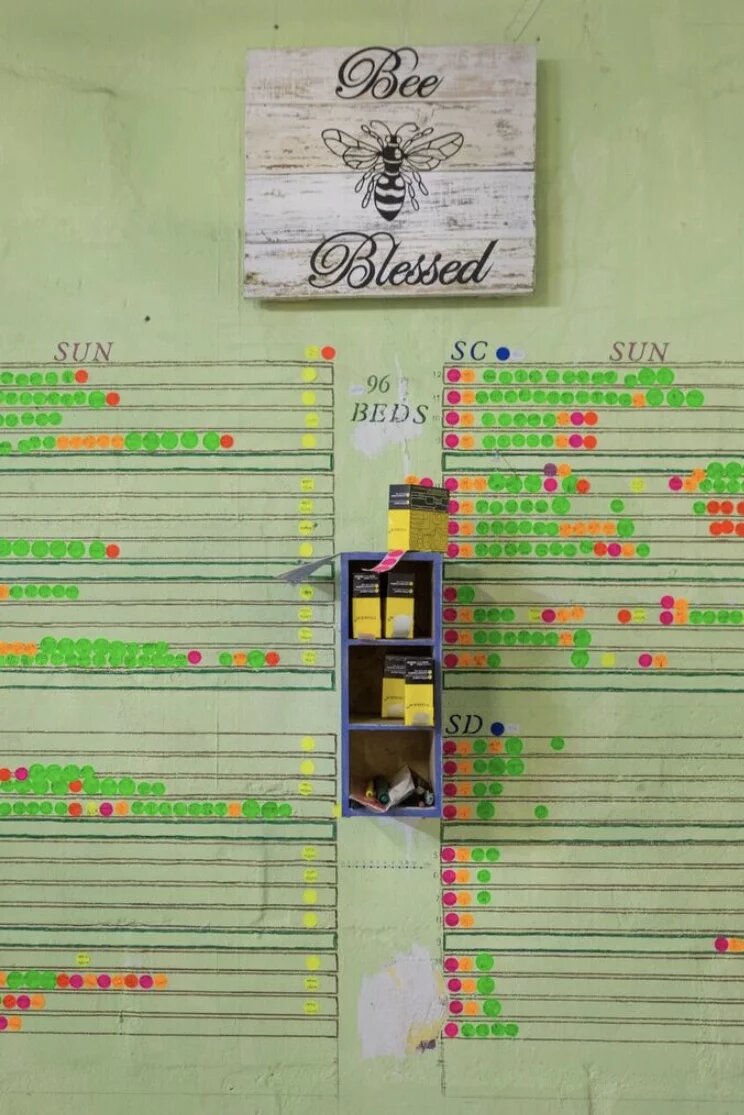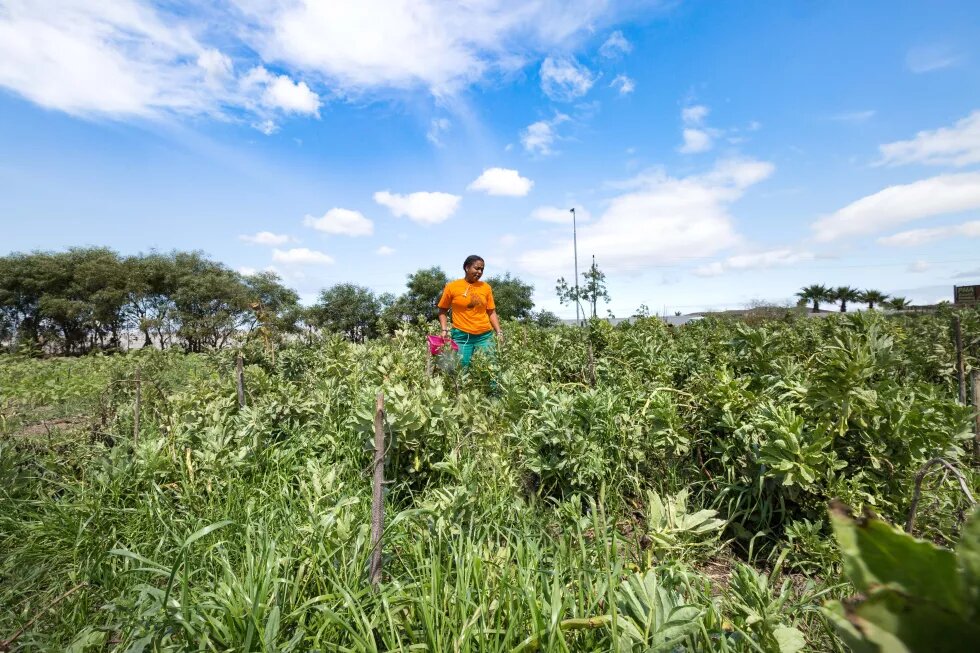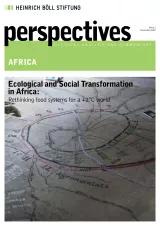
Since the relocation of German Lutheran farmers to Cape Town in 1885 to assist with food provision for the growing settlement, the Philippi Horticultural Area (PHA) has been the breadbasket of Cape Town. Its microclimate is ideal for producing horticultural crops (vegetables, herbs and flowers), and the abundance of aquifer water from the Cape Flats Aquifer below make these 3 000 hectares of farmland the most productive peri-urban agricultural hub in the country. Numerous City of Cape Town studies and independent reports identify the PHA as critical for meeting the food security needs of the city and addressing the government’s 2030 land reform targets. Its farmworkers are primarily women and youth.[1]
But the PHA land is also highly prized for urban development. With the pressure to create more housing for a growing population and the prospect of converting low-rates-paying agricultural land into more fiscally lucrative housing developments, the city has led a relentless charge to “develop” this “rundown” area for almost a decade.
Perspectives spoke to PHA farmer Nazeer Sonday, chair of the PHA Food and Farming Campaign that was born from the need to protect the area from proposed development and to promote urban food security and agroecological farming in a changing climate.

Perspectives: Food insecurity is generally discussed in terms of rural agriculture. Why is this misleading in the South African context?
Sonday: It starts with the simple fact that 63 percent of South Africans are living in urban areas and the number is expected to rise to 71 percent by 2030.
It’s unimaginable to think that farmworkers in the PHA, located in a seemingly modern city like Cape Town, are food insecure. But this is the reality. Low wages and the high cost of living in the city mean that choices about food purchases are made after fixed expenses such as rent, electricity, water, transport are covered. The high price of a basket of basic foodstuffs negatively affects the nutritional quality of food choices made.
A 2012 African Food Security Urban Network study of a thousand households in three low-income wards in the city – Ocean View, Philippi and Khayelitsha – found three-quarters of these households are food insecure. Urban poverty, unemployment and inequality coupled with high crime rates impact families’ ability to purchase food and the level of food insecurity in the city.
Another factor that contributes to the food insecurity in the city is the high competition for job opportunities available and this is exacerbated by the migration of rural people into the city looking for work. This pushes wages down. The rural exodus is largely due to the lack of a government rural-development plan, the lack of agrarian reform, corruption, and the concentration of resources in cities.
What makes peri-urban agricultural areas like the PHA so important?
Only 12 percent of South Africa’s land is suitable for crop cultivation, and only 3 percent is considered to be highly fertile. Two million hectares have been lost over the last 25 years. This is a direct threat to household food security, via high food prices, and food sovereignty as a country, as it leads to increasing dependence on imported food.
Agricultural land on the periphery of cities and towns plays a major role in the provision of locally produced and affordable food through horticultural crops such as vegetables, fruits, flowers, berries and nuts. With 3.5 crop cycles per year – arguably double that of other horticultural production areas – the PHA provides a significant amount of Cape Town’s vegetables. This could easily be expanded to include more polyculture, i.e. the integration of small animals such as chickens for eggs and meat, ducks, rabbits, geese, pigs and even farmed fish. Even milk and dairy can feature to some extent in the peri-urban farming landscape. The suburb of Durbanville in Cape Town was a dairy producing area before urban sprawl laid waste to the farming.
Moreover, agricultural land on the periphery of cities could help unlock smallholder farming that can create jobs and livelihoods. If, with city council support, small-scale farmers’ produce could enter communities not via supermarkets but through informal traders and farmers’ markets, it could potentially address issues of access and affordability, reduce the impact of food production on the climate, and build climate resilience.
Peri-urban agricultural areas are also essential for the provision of ecosystem services such as stormwater harvesting, flood mitigation, the recharging of aquifers, waste-water recycling, protecting biodiversity, recycling nutrients and carbon sequestration.
What are the main threats to peri-urban agricultural lands like the PHA?
Most of the high-potential agricultural land in the periphery of cities and towns is under high threat by the development of country-living estates; the development of low-income housing – away from economic opportunities; mining; and non-food agricultural activities such as boutique wine farms or game farms. With housing developments becoming extremely lucrative business for banks and property developers and for the council that benefits from the income of upwardly spiralling rates-valuations, land speculation is actively pursued to increase the rand value of peri-urban land. The cabal of banks and property developers – I would add the political estate – forms what [Josh] Ryan-Collins calls the “real estate–financial complex” in his book Rethinking the Economics of Land and Housing. The value of a newly built house can increase by as much as 50 percent in five years: Cape Town is third in the world for property inflation.
Of course, housing for low-income households is an imperative. But these should be located where the most marginalised have access to services and economic opportunities. For the past 25 years, our housing policies have failed to address spatial apartheid and have created a situation where the poorest are forced to spend the bulk of their wages getting to and from work. National, provincial and local governments all own roughly 10 000 hectares in well-located Cape Town suburbs – this is the land on which affordable housing must be provided.
The pressures on peri-urban land directly impact food availability and affordability as well as climate change, due to the high carbon footprint of our food. The benefits of primary food-production areas to secure affordable, locally grown food with a minimal carbon footprint are currently not considered in the City of Cape Town’s planning.
Why are the values of ecosystem services embedded in agricultural land and land reform not assigned their proper worth in Cape Town’s economic development discourse?
This is largely a political issue. Twelve studies – city, provincial and independent – produced between 1997 and 2018, and generated in response to the struggle to protect the PHA, have been ignored by political decision-makers. These confirmed the importance of the PHA in keeping food prices down and highlighted the area’s potential to support 5 000 small-scale farmers which can create 30 000 direct jobs, 55 000 indirect jobs, with 2 million tonnes of organic food for local and export markets. For city and provincial officials to take decisions counter to these reports’ recommendations required direct political interference in various departments like spatial planning, environment, development planning, safety and security, water and sanitation, economic development, etc. Where this interference was resisted by officials, threats, victimisation and even sacking of officials occurred. In the case of Cape Town, both the spatial planning and housing departments were dismantled in an extensive restructuring exercise in 2016–17 that saw many of the city’s most competent civil servants lose their posts and the concentration of power in the mayor’s office. The ruling party’s caucus voting instruction is also used to keep independent-minded councillors in check.
It’s become clear: collusion between property developers, politicians and more broadly political parties forms a nexus that results in state capture, undermining the role of agriculture and peri-urban farmlands in the city’s economy. Property has become the primary focus of an economic development discourse that is said to promote economic growth to address poverty, unemployment and inequality. But, as Josh Ryan-Collins notes, and as confirmed by experiential learning in the PHA, this economic development discourse does not create jobs (except some short-term construction jobs), does not provide affordable housing, excludes social housing, does not bring down housing rentals and does not create new goods and services – all factors which would address poverty, unemployment and inequality. Housing is a consumption item.
How can peri-urban agricultural land be better protected?
We need to advocate for a more balanced economic development discourse. To achieve this balance, the protection of agricultural land needs to be enforced. More than that, land for horticultural production must be expanded.
Drawing on the research done for the city of Rosario [Argentina], feeding a population of 5 million – as Cape Town is projected to have by 2030 – will require 30 000 hectares. Expansion of horticultural land offers an immense opportunity for land restitution based on food security and climate resilience. The pool of human capital with traditional farming knowledge and experience exists in the city, as evidenced by urban farmers and the vibrant food-garden culture. Emeritus professor of economics Sampie Terreblanche –marginalised by the ANC and business elites – noted in his book Lost in Transformation that, to decrease South Africa’s poverty, unemployment and inequality and secure food security, the country needs to expand its manufacturing sector and its peasant agriculture. Re-peasantising Cape Town is not only possible, it’s an imperative.
In our ongoing court battles against the City of Cape Town, the Western Cape Province and developers, we are arguing for the explicit integration of food security and climate change concerns into the environmental impact assessments required before developments are allowed to proceed. If this case is lost, the destruction of peri-urban agricultural land will proceed at a rapid rate in the city and across the country. Food security and, more broadly, food sovereignty and land reform – key components of a developmental state – will not be achieved.
What are some of the main constraints faced by existing small-scale farmers in the PHA?
Society puts a low worth on small-scale farmers and small-scale farming; industrial-scale farming is perceived to be a model of success. This impacts on the confidence of small-scale farmers and withholds support for appropriate resources and training from government. Education and awareness are key to reverse this. This is the subject of ongoing work of the PHA Campaign, centred around the message, “Do you know where your food comes from?” The development of small-scale farmers requires the whole society’s support.
Best practise breeds success. To promote small-scale farming, a small-scale farming model in horticulture is being developed that can act as the repository of knowledge – traditional and scientific – and a space for learning. The PHA Campaign’s Vegkop Polyculture Farm is an attempt to build a two-hectare farming model that could be used for land reform in the PHA. The farm is doing farmer-to-farming learning with evicted and unemployed women farmworkers to build capacity to become farmers.
How could their productivity be ensured in a changing climate?
Access to land with terroir qualities – good soil, water, climate – that is located near markets. This will make farming an economically viable option for many small-scale farmers juggling multiple jobs to survive. The PHA offers such a space.
Peer-to-peer learning in agroecological farming practise – such as diversification of crops, conservation tillage, green manures, natural fertilisers and nitrogen fixation, biological pest-control, rainwater harvesting, and production of crops and livestock in ways that store carbon and protect forests – is another important avenue.
The development of a proefplaas [experimental farm] that can function as a repository of knowledge and best practise wherein farmers can learn and engage would play an important role in this context.
How can urban agriculture contribute to urban climate resilience?
Firstly, let me be clear about what we mean by urban agriculture: it’s the education of city folk around issues of nutrition and food gardening, and the establishment of roof or food gardens. There is little evidence that “urban agriculture” can be used as an adequate response to food insecurity or as a path to food sovereignty. However, rooftop gardens can improve micro-climates, increase food production and waste recycling. Urban greening – let’s re-fynbos the City of Cape Town and plant one million trees on the Cape Flats Aquifer that will clean surface water for cleaner aquifer recharge – is imperative for reducing urban temperatures and the energy demand for cooling.
The Philippi Horticultural Area is not this. The PHA is a farming area, a peri-urban farming area, the location, size and scale of which is adequate to contribute significantly to both mitigation of climate emissions and resilience to the pending market fluctuations that will come about as climate shocks hammer various food source streams.
A key victory from the drought and water crisis was that the authorities acknowledged, for the first time, the value to the city of the Cape Flats Aquifer. The PHA is the recharge zone for the Cape Flats Aquifer and the PHA is drought-proof because of the aquifer. The aquifer is able to supply the city with a third of its potable water use under the condition that its recharge area – the farmlands – is protected. Ironically, a managed aquifer recharge programme was initiated, and yet city and provincial governments are still doggedly opposing the PHA Campaign in court alongside developers. Developments which will destroy both resources and thus the city’s climate resilience.
[1] These include:
Battersby-Lennard, J. and Haysom, G. (2012) Philippi Horticultural Area: A City Asset or Potential Development Node? A report commissioned by Rooftops Canada Foundation Inc. Foundation Abri International in partnership with the African Food Security Urban Network. Available at http://www.afsun.org/wp-content/uploads/2013/09/ Philippi-Battersby-LennardandHaysom.pdf
Indego Consulting (2018). Building the City of Cape Town’s Resilience and Adding to Regional Competitiveness: Philippi Horticultural Area: Socio-Economic Agricultural Plan.




